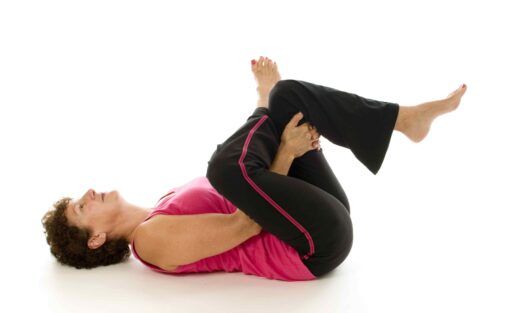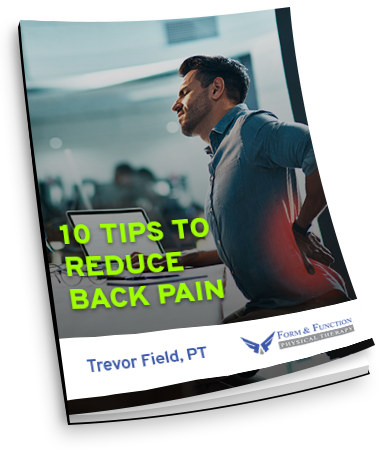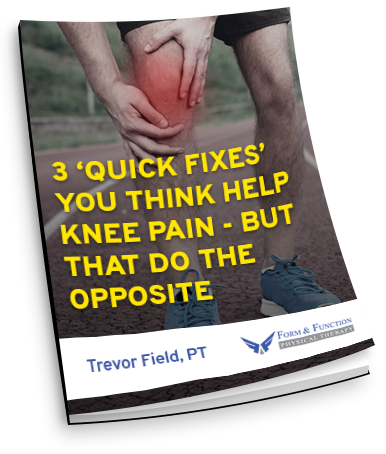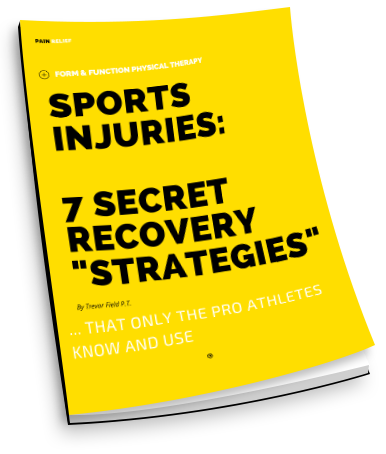Let’s talk about exercise and back pain…
It’s a common question in our office, and it’s one that comes up even more this time of year (especially 8 weeks into new habits!):
“Is it ok to exercise when my back is hurting? I’ve just got into a good routine sticking to the gym and working out three times a week, and I really don’t want to stop…”
I get the frustration, and I also know that the thought of doing any movement at all when you’re going through some kind of pain might feel a little scary…
You don’t want to run the risk of aggravating it any more in case it turns into something more serious.
You don’t want to go ‘too hard’ in the gym in case you pull another muscle.
And you don’t want to wake up one day to find that you can no longer roll out of bed easily, walk down the sidewalk, or even drive because what you did made it worse.
But don’t let that worry you too much – that’s rarely ever the case!
An aching lower back doesn’t mean you’ve got to be bedbound, with heat and ice packs, anti-inflammatories, and pain patches until it magically disappears.
You CAN keep moving! In fact, not moving at all can make your back pain worse!
Here’s why…
If you suffer from lower back pain that comes and goes, gentle walking with exercises designed to improve lower back strength and movement added in, will make a big difference.
Walking is a completely natural movement that keeps your joints mobile and muscles working – even those in your feet, knees, hips and torso – which play an important role in keeping the muscles in your back that hold you up right, strong.
Stretching combined with walking will improve your backs strength, flexibility and posture, which in turn, can help stop back pain from creeping up on you when you least expect it. What’s more, it can also reduce how painful it feels and how much it gets in the way of day to day life.
So here’s the important question to answer now that you know it 100% is ok to exercise even if you’ve got a bad back…
Are there exercises I should be avoiding?
Here are the BIG ‘Do Not(s)’
The 2 most common stretches given to help back pain (even from other physical therapists) are wrong– and here’s why.
First – Don’t stretch your hamstrings.
Why? – Tight Hamstrings Didn’t Cause Your Back Pain.
Hamstrings begin to shorten as a result of imbalances elsewhere in the body. They are working to pull the pelvis into a position where it will help create space for the nerves that exit the spine.
While stretching the hamstrings will help you feel looser temporarily, it will never make a lasting difference in solving your back pain.
I’m not saying don’t stretch anything. For people with lower back pain, stretching is important. Stretching the muscles in your legs actually help to increase range of movement in your hips, taking the stress off your lower back – which in addition increases blood flow, allowing nutrients to flow in, taking care of the muscles in your back.
But if there is a nerve irritation, a disc bulge or a herniation and the nerves no longer glide freely through the spine. Stretching the hamstrings will also put tension on the nerves. It’s never great to stretch on a nerve because it is not as extensible as muscle, and the more you pull, the more irritated it will become. Only in rare circumstances will we stretch or as some providers suggest “floss the nerve” to free it’s movement, and that’s because it can leave you feeling worse.
Second – Don’t stretch the glute.
Why? You’re compressing tissues you shouldn’t.
There are a hundred variations of this stretch, from just grabbing the single leg and pulling it up, or across your body. Crossing your leg while sitting in a chair and bending forward. But, no matter how you perform this stretch one thing is for certain… you will compress the sciatic nerve.
While this may give people some temporary relief, again, it is not addressing the cause of the back pain, and can actually increase the irritability of the nerve. When nerves are irritated they swell, and these narrow passages for the nerves can no longer accommodate the nerve.
So start with a gentle walk (on flat stable ground) just to get/keep your body moving. Your next move is to consult with an expert to prescribe the right strengthening exercises that consider your current level of strength, as well as the irritability of the back, so you can progress comfortably, without setbacks or worse.
If it’s a “canned” protocol of exercises that comes from the 1980’s, or includes either of the 2 exercises above it’s best to look elsewhere for your advice.







